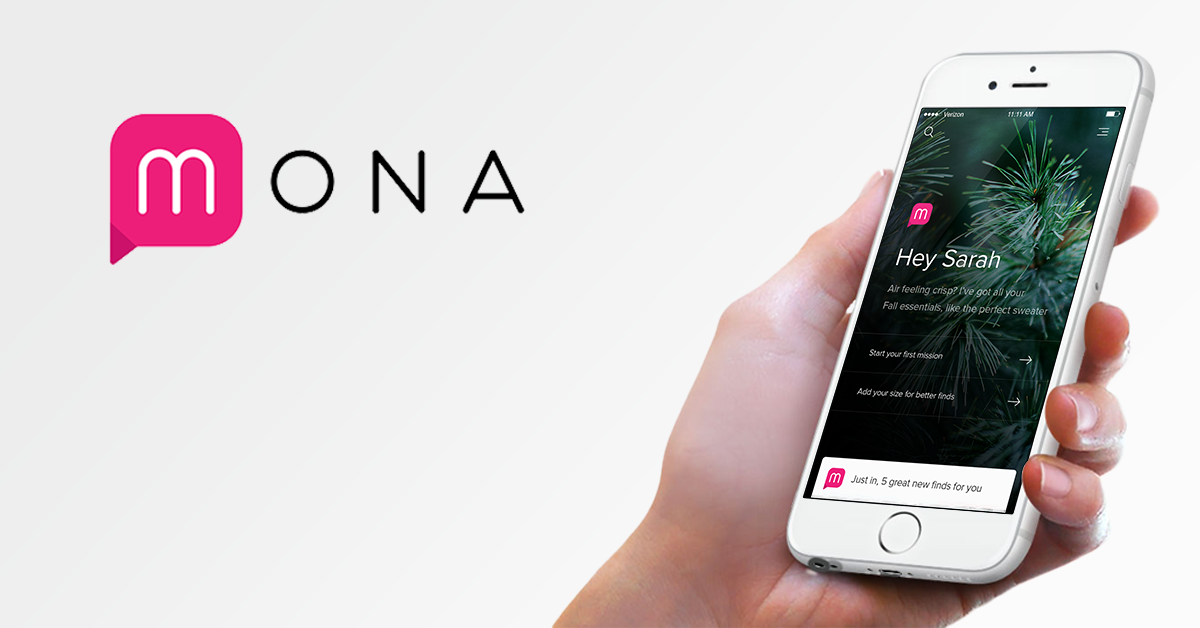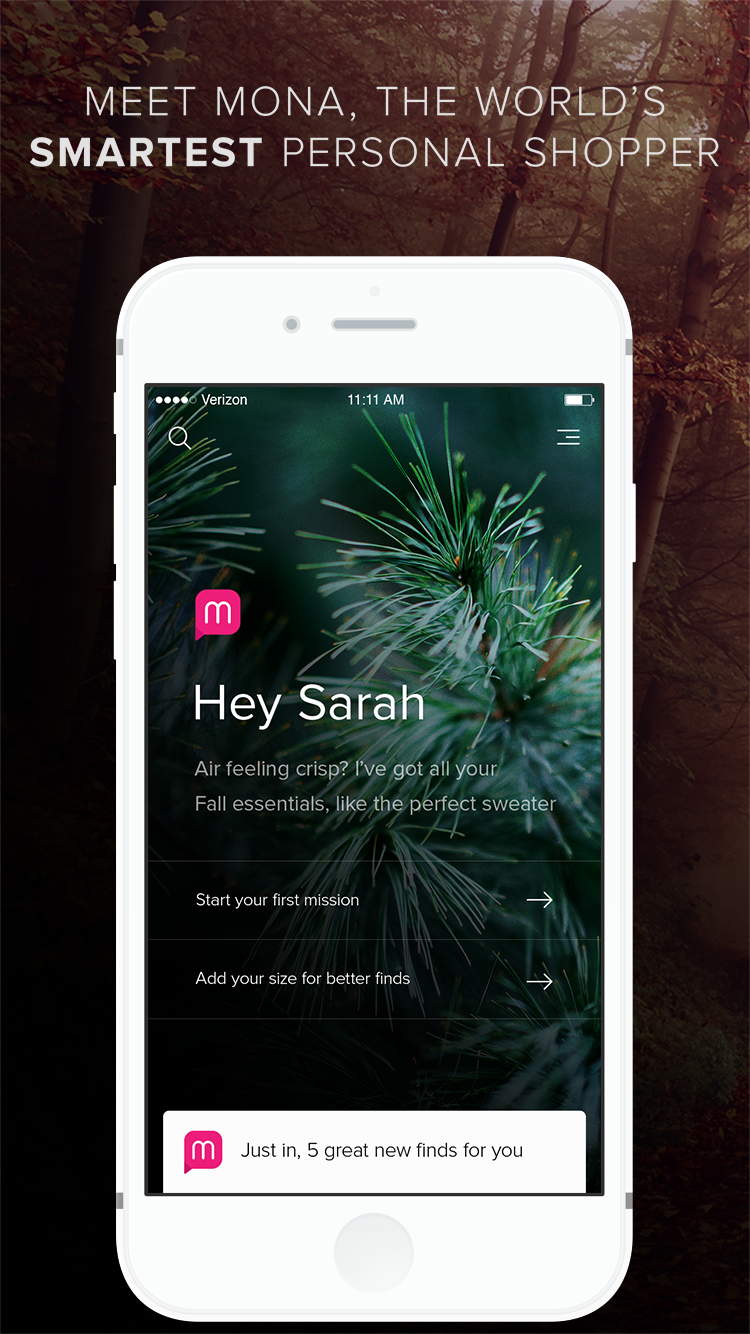Q&A with Mona - A.I. based personal shopping assistant
 In this post we are talking to Orkun Atik, co-founder and CEO of Mona, Techstars '15 company from Seattle.
In this post we are talking to Orkun Atik, co-founder and CEO of Mona, Techstars '15 company from Seattle.
1. What is Mona in 140 characters?
Mona is an artificial intelligence based personal shopping assistant in your pocket. Just like an expert in-store assistant that knows you really well.
2. Why did you start the company?
Since early 2000s, the e-commerce search and discovery experience has seen minimal advancements. Most shopping destinations are cluttered with mechanical features, merchandising widgets and ads throwing almost-random products to the consumers. The whole experience is organized around the products, and as a one-size-fits-all experience. This is why mobile conversion rates are less than one percent today. We want to change this. We want to make mobile shopping simpler and personal.
3. What does your product do?
Let’s say you’re looking for a pair of jeans. You tell Mona and she will bring you a handful of her best picks for you. She knows your size, style, budget and your preferences around brands, colors and even retailers. She asks for feedback, analyzes your feedback in real-time and then gets you better recommendations. This is our first step towards creating a mobile shopping experience that is similar to an in-store dialogue between a customer and assistant. The more you interact with Mona the better she gets to know you. Mona can also track products and brands, specific to you and your unique goals. We’re also very excited about a new gift search service we recently launched for the holiday season.
This is our first step towards creating a mobile shopping experience that is similar to an in-store dialogue between a customer and assistant. The more you interact with Mona the better she gets to know you. Mona can also track products and brands, specific to you and your unique goals. We’re also very excited about a new gift search service we recently launched for the holiday season.
4. How does Mona work under the hood?
We are building Mona as a self-learning, self-improving search and personalization platform. We build on technologies such as search, collaborative filtering, content based filtering, information extraction and machine learning.We’re using machine learning to analyze millions of products everyday and build a product intelligence graph. We build datasets such as brand similarities, category styles and style similarities, seasonalities and more. We have a personalization engine that learns user’s past purchases, behavior and feedback and builds digital model of user across all stores and categories.Mona customers have an option to link their email accounts to Mona and Mona learns about their preferences by understanding and analyzing their past online purchases. We have a semantic search and discovery engine that connects users and products through an interactive search experience.There’s definitely a lot of engineering under the hood but we also have some domain know-how fed into the engine, too. Organizing data from hundreds of retailers and brands and creating a seamless and delightful experience for customers requires a lot of work behind the scenes.
5. What’s the hardest part about making A.I. like Mona work?
First, building data products is really hard and complicated. It takes years to build and mature them. Fail-fast approach generally doesn’t apply here. We’ve been building Mona more than a year now. Second, you need data to build, train and improve your models. How do you get that relevant data as a start-up? Over the years, we have launched and analyzed hundreds of experiments that yielded durable learnings around user experience and algorithms.We know what to do in certain cases. However, we need to be creative and scrappy in other cases and it can be pretty tricky. We’ve also seen again and again that great design can move the needle more than most algorithmic improvements. There are things you can do on the UX interaction and design side to compensate for lack of trained models or data. Data quality is another problematic area. Sometimes you don’t get a recommendation right.You have to find ways to deal with and fix embarrassing content and recommendations. Thirdly, building data products at scale is really hard. You cannot hack your way through scale, you have to put significant engineering effort to get things working. For instance, we provide our customers ways to give Mona feedback on the product attribute level like brand, price, style, color.Understanding and analyzing this feedback and returning new, better results in real-time is really challenging. We spent months to get it working. And finally, identifying and reflecting the Mona personality through design is something. What is an A.I. assistant? Does it have a personality? Who is she? These are all hard and evolving questions for us.
6. What are the top things users ask Mona to find?
People are looking for deals and discounts whether they’re looking for a high-end designer handbag or a pair of sneakers. Most searched categories are jeans, dresses and shirts. Some of our customers are very specific in their searches like “Grey oversized sweaters under $50 from Revolve Clothing”.Some on the other hand are just looking for “Dresses”. We are really amazed by the number and diversity of brands and retailers our customers are following. The options are endless and Mona saves them time and money by matching them with the most relevant products out there.
7. What is your long-term vision for the company?
We believe that in the next 5 years people will be interacting with software through A.I. based personal assistants instead of apps or browsers. Those assistants will add a layer of convenience between us and all underlying services and utilities.
8. What is your advice to your fellow founders?
Start looking for mentors who share your vision in the early days and talk to your customers instead of making assumptions. Best fundraising advice always comes from other founders. Investors, particularly VCs invest in trends. You could get funded if you’re riding the wave of a trend. But most iconic companies were contrarians and defined their own markets.Screw the fail-fast approach. The world needs more entrepreneurs that work on real and hard problems. They take time. I feel very lucky and grateful for being part of the Techstars program and all the great mentors helping us here. Techstars made a huge difference for us. Let’s pay it forward.